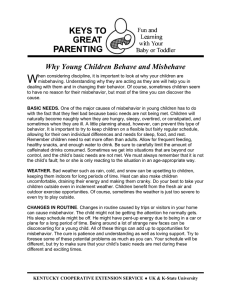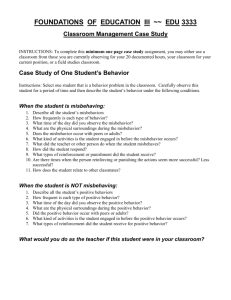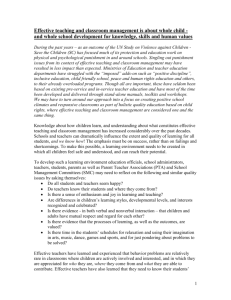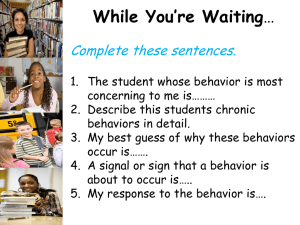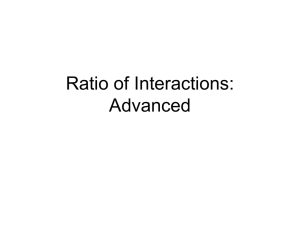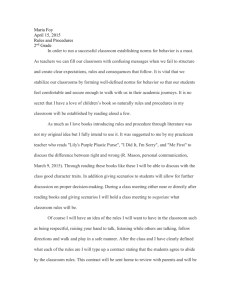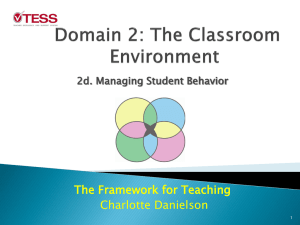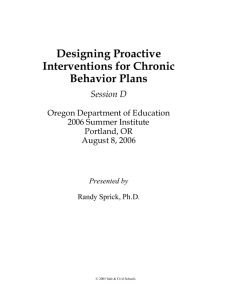Cooperative Discipline: Classroom Management & Student Behavior
advertisement
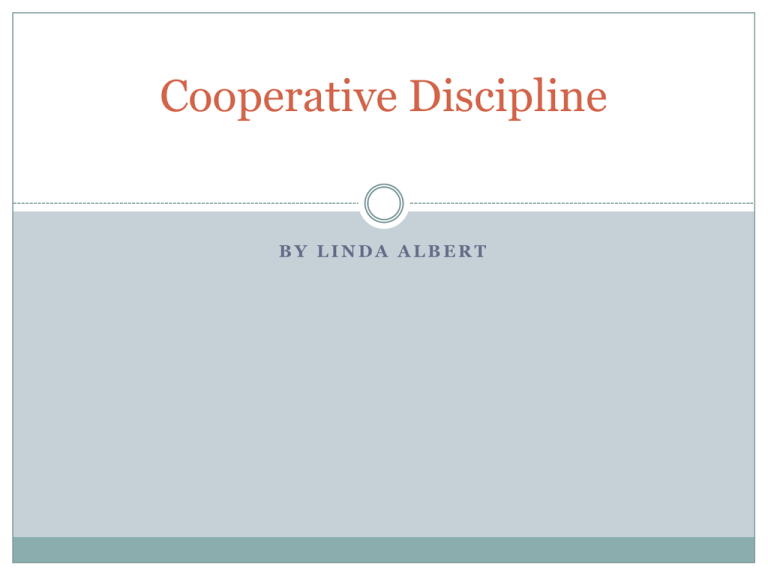
Cooperative Discipline BY LINDA ALBERT Three basic concepts to behavior: 1. Students choose their behavior 2. Ultimate goal of behavior is to fulfill the psychological and emotional need to belong. 3. Students misbehave to achieve one of four immediate goals (covered later) Behavior is a CHOICE! What is our goal? To have cooperative relationships in and beyond the classroom What is the action plan? INDIVIDUALIZED discipline plan specific to student’s needs Pinpoint and describe student’s behavior Identify the goal of the misbehavior Choose intervention technique for moment of misbehavior Select encouragement techniques to build self-esteem Behavior is a CHOICE! No one can make someone behave a certain way. We need to learn how to interact with children so they will choose to behave appropriately. What are some ways we can have positive interactions with our students? Styles of Classroom Management Hands-Off Style Permissive “freedom” No clear boundaries No effective teacher interventions ready at moment of misbehavior Many students push the limits and make poor behavior choices Styles of Classroom Management Hands-On Style “Because I say so” Making students behave Laying down the law and expecting obedience Many students make poor choices when confronted with a hands-on style of classroom management They want to rebel Styles of Classroom Management Hands-Joined Style Students are respectfully treated as important decision makers Participate in the design of their education More cooperative and achieve more academically Behavior is the need to BELONG What does it mean to “belong” to a middle or high school student? – (Think/Pair/Share) The 3 C’s Capable Feel capable of completing tasks Connect Connect successfully with teachers and classmates Contribute Contribute to the group in a significant way In a classroom setting, what do these three words have to do with discipline? In a classroom, how can we authentically encourage our students? Three Factors Affect the three C’s 1. Quality of teacher-student relationship 2. Strength of classroom climate for success 3. Appropriateness of the classroom structure The Encouragement Process Students misbehave less because we give them the gift of our attention Encouragement Affects: Self-esteem: healthy, resilient self-esteem helps students achieve more academically and cause far fewer behavior problems Violence Prevention: unfulfilled needs lead to anger, frustration, and feelings of powerlessness. Gang Prevention: students join gangs to belong; community must join together to encourage youth Inclusion: special needs students have the same need to belong; “I can do it” 4 Goals of Misbehavior Attention: extra attention; center stage; constantly distract the teacher and classmates to gain an audience Power: quest for power; be the boss; show others you can’t push them around; refuse to comply with class rules or requests Revenge: lash out to get even for real or imagine hurts; target can be teacher, students, or both Avoidance-of-Failure: avoid repeated failure; choose withdrawal behaviors; hope everyone backs off and leaves them along Scenario 1 Student is 15-20 minutes late and makes an announcement as she enters the room. Scenario 2 Student refuses to raise hand during a discussion. Scenario 3 When Sally answers, Jimmy has a habit of rolling his eyes and sometimes making a comment under his breath. Scenario 4 Student constantly trips or falls when walking around the classroom. Your turn! Get into your regular groups. Create a scenario that is centered around one of the four goals of misbehavior. You have 5 minutes. We will come back as a group to discuss each other’s scenarios.
